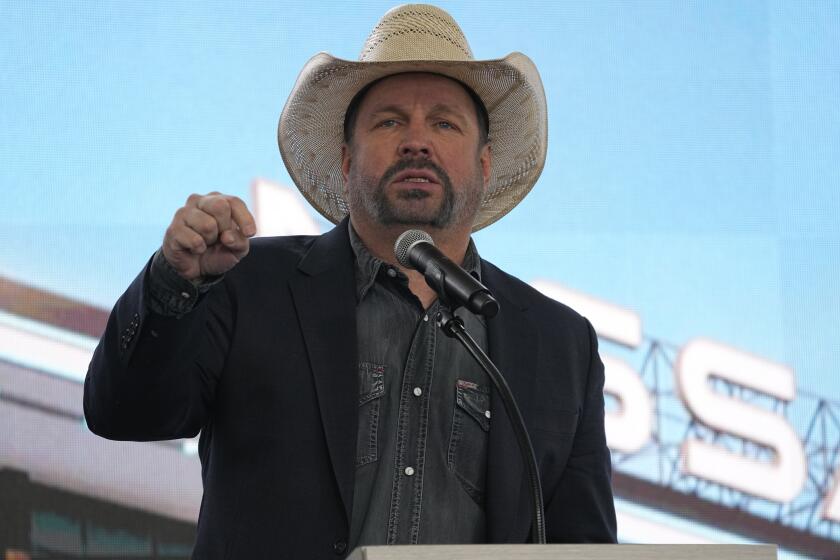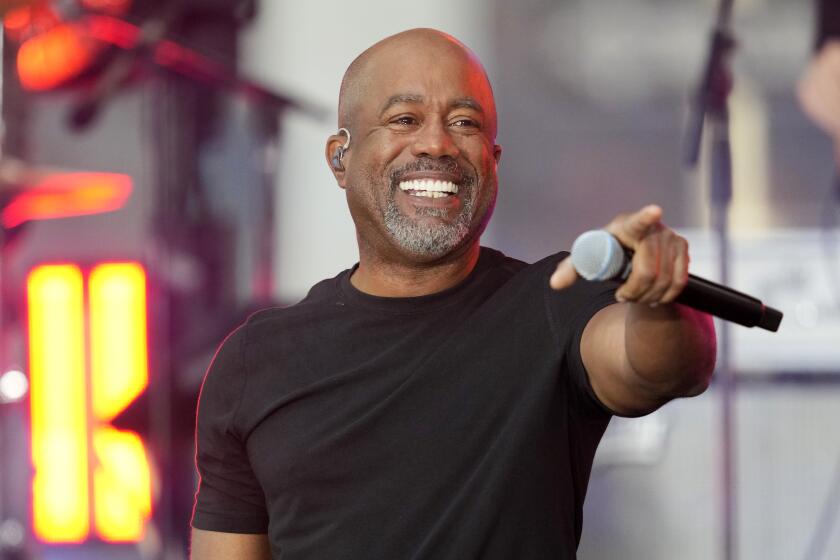Sanborn Makes a Case for Diversity Training
David Sanborn, the popular alto saxophonist whose sound and style have launched a thousand imitators, has an important announcement:
He does not consider himself a jazz musician.
“I sometimes get looped in with jazz musicians because I play sax and improvise,” Sanborn, 50, said from a stop in Columbus, Ohio, on a tour that brings him to the Orange County Performing Arts Center tonight. “But if you know my music, you wouldn’t confuse it with jazz. There are certain stylistic and rhythmic elements that keep me from being in that category.”
Some might argue with him. True, he is best known for music that works from strong, often danceable beats, and a style that has more in common with Junior Walker than Charlie Parker. But he has done several decidedly jazzy programs.
On 1991’s “Another Hand” album, he played with such well-known jazz musicians as drummer Jack DeJohnette and bassist Charlie Haden. For his 1995 project, “Pearls,” he played standards arranged by Johnny Mandel. And Sanborn has one thing in common with every jazz musician from Louis Armstrong to Wynton Marsalis: He uses his instrument to express strong emotions.
Actually, he has always been suspicious of the many labels for music.
“It’s so difficult to fragment music like that in the first place,” he said. “How can you say ‘from here to here is jazz, from here to here is funk or R&B;’? When you get on the border lines, things get fuzzy.
“You can clearly say that Wynton is a jazz player. But others, like [saxophonist] Greg Osby and [guitarist] Pat Metheny, skirt the border. When you start using the kind of rhythmic elements [they use] and in that spirit, it gets even harder to classify music in these artificial ways.”
This wide-angle view was most apparent on Sanborn’s now-defunct television series, “Night Music,” produced by “Saturday Night Live” producer Lorne Michaels. Sanborn would bring jazz, pop and alternative players from all walks of the sonic world and put them in front of the camera.
“It was great having the opportunity to get all those different people on who didn’t normally appear on TV,” he recalled. “We would have Pat Metheny followed by the Pixies, or [saxophonist] John Zorn and Was (Not Was) and Sonny Rollins. It was great to have that eclectic spirit on TV.”
*
He says his taste for such diversity sprung from an unlikely source. As an upstart saxophonist, he befriended a circle of Midwestern musicians, many of them connected with Chicago’s Assn. for the Advancement of Creative Musicians and better known for avant-garde work than for the R&B-inflected; music that has marked Sanborn’s career.
“I grew up in St. Louis and was influenced by people like [Art Ensemble of Chicago trumpeter] Lester Bowie, [saxophonists] Julius Hemphill and Oliver Lake.
“[Percussionist] Phillip Wilson was a good friend of mine. More than anyone else, he was responsible for helping me become a professional musician, dragging me to the clubs, talking guys into letting me sit in. He’s the one who first got me the gig with the Paul Butterfield Blues Band.
“My life would be different if all those people hadn’t been so nonjudgmental about music. Lester could do an outside jazz gig, then play with the Four Tops, then do circus-band music, then do gospel music with Fontella Bass. Good music was good music. Why not do it all?
“If you shut out music because it doesn’t fit your preconceived listening patterns, you’re cheating yourself. Opera, country, outside music, commercial music . . . if you like it, it’s good. If it has meaning, use it.”
*
Sanborn’s career is testament to his wide-ranging tastes. He played blues with the late guitarist Albert King and with Little Milton while still a teenager. He joined the Butterfield band in 1967 and went on to work with Stevie Wonder, the Gil Evans Orchestra, the Brecker Brothers, David Bowie and Paul Simon in the ‘70s.
His first album, “Taking Off,” was released in 1975; a string of gold and platinum albums followed. He won a Grammy in 1981 for his album “Voyeur” and another in 1986 for “Double Vision.” He says his next release will mark a return to a more urban sound, with drums loops and a trademark funky feel.
“[Bassist] Ricky Peterson brought me these amazing drum loops while we were on the road, and we’ve pretty much built the album around them. He and I play most of the instruments on the album, which is different than the albums I’ve done in the last five years, all of which were recorded live (in the studio).
“I spent three weeks recording it, which is more time than I usually spend. I don’t like to spend a lot of time in the studio, I think it kills it. I kind of lose patience with the process. Hearing yourself play over and over is counterproductive; you tend to get analytical about it. Normally, I like to do these things in a week--which is still a lot of time.”
* David Sanborn plays tonight at the Orange County Performing Arts Center, 600 Town Center Drive, Costa Mesa. 8 p.m. $18-$40. (714) 556-2787.
More to Read
The biggest entertainment stories
Get our big stories about Hollywood, film, television, music, arts, culture and more right in your inbox as soon as they publish.
You may occasionally receive promotional content from the Los Angeles Times.










